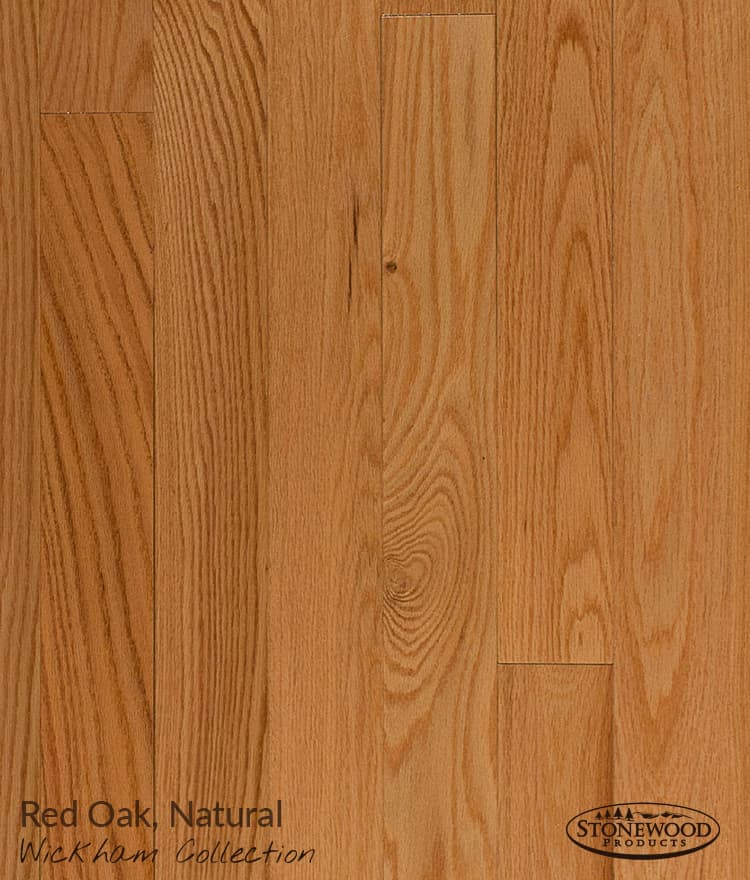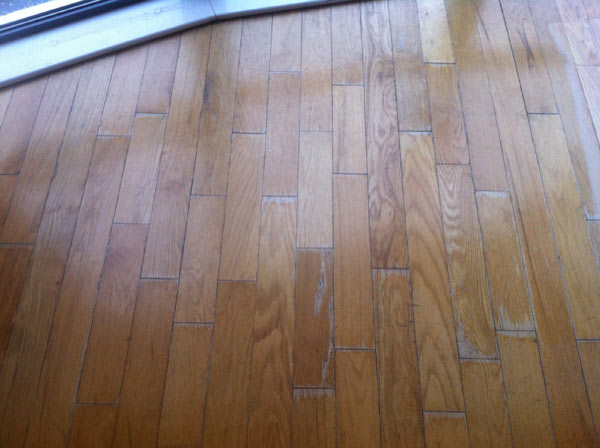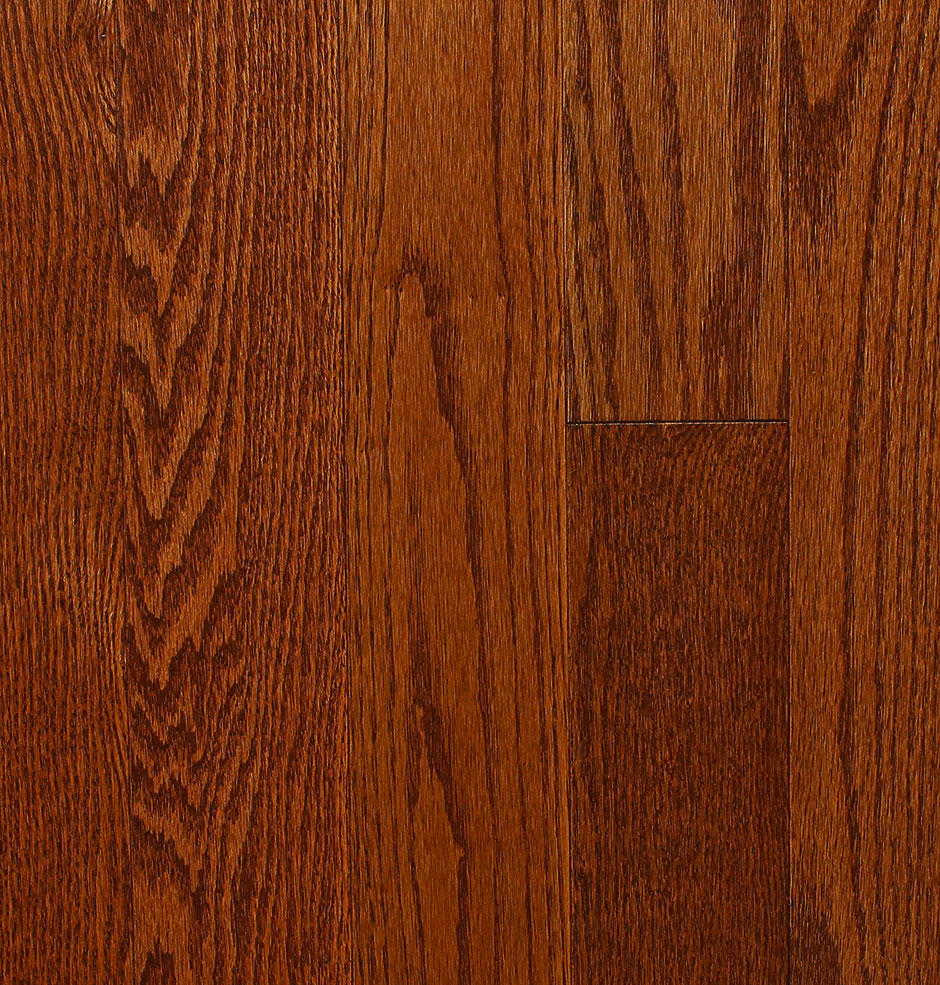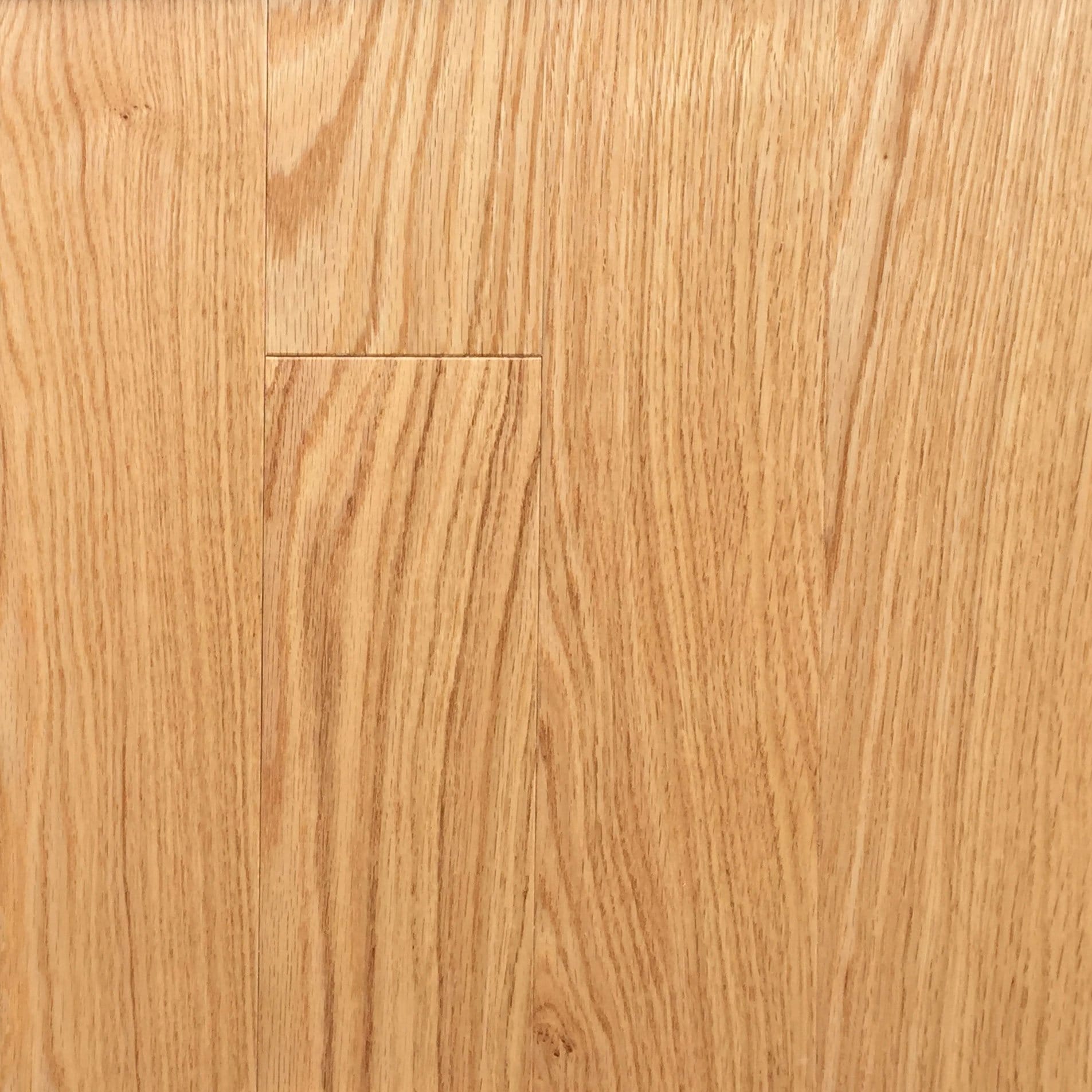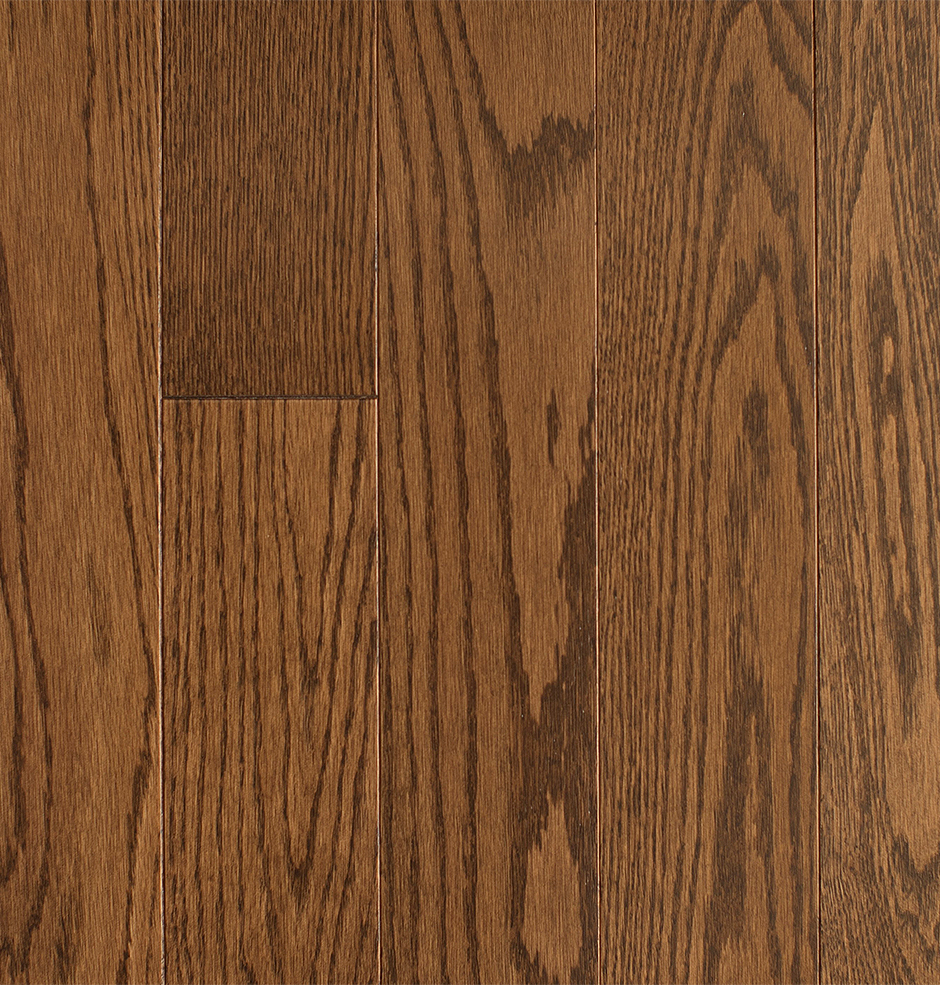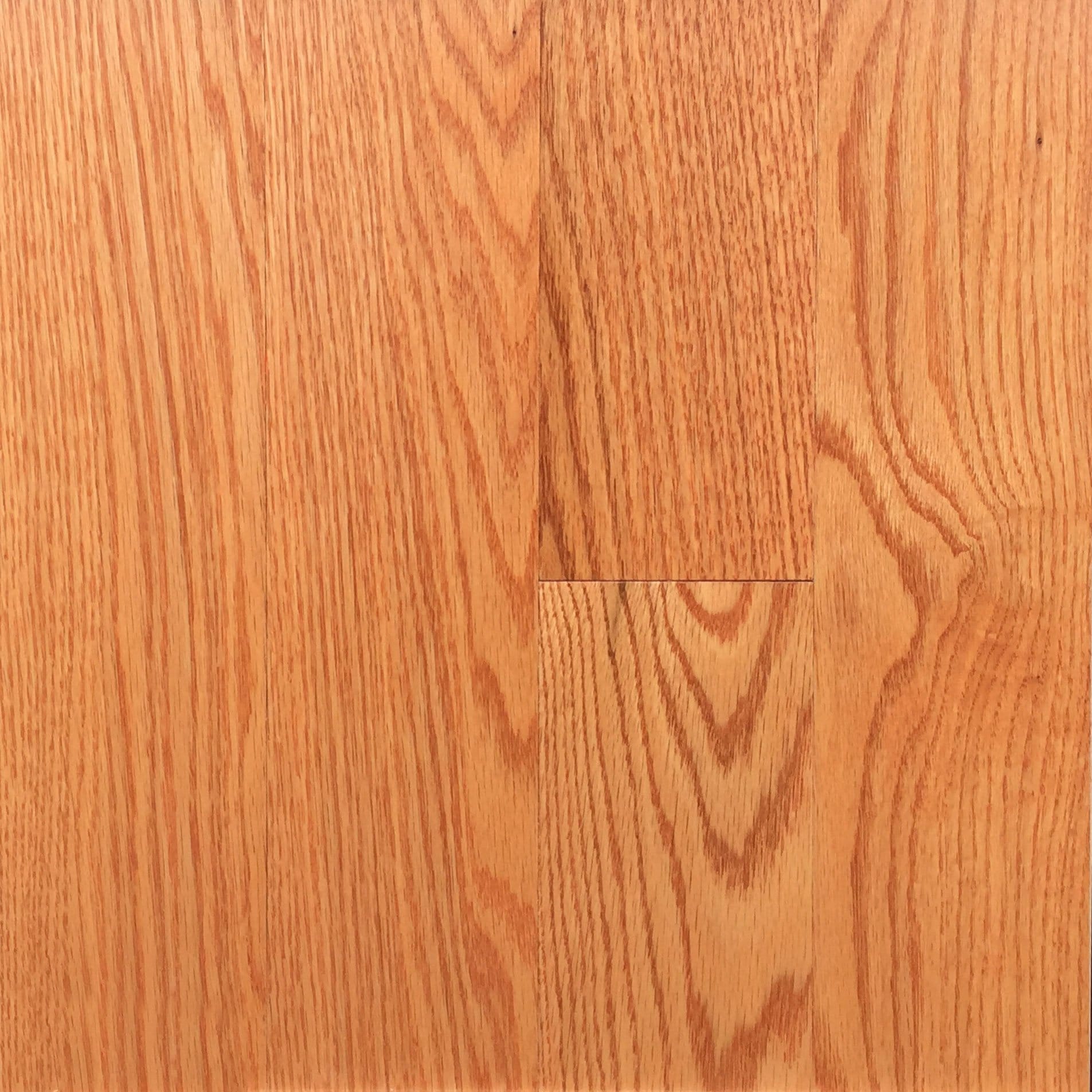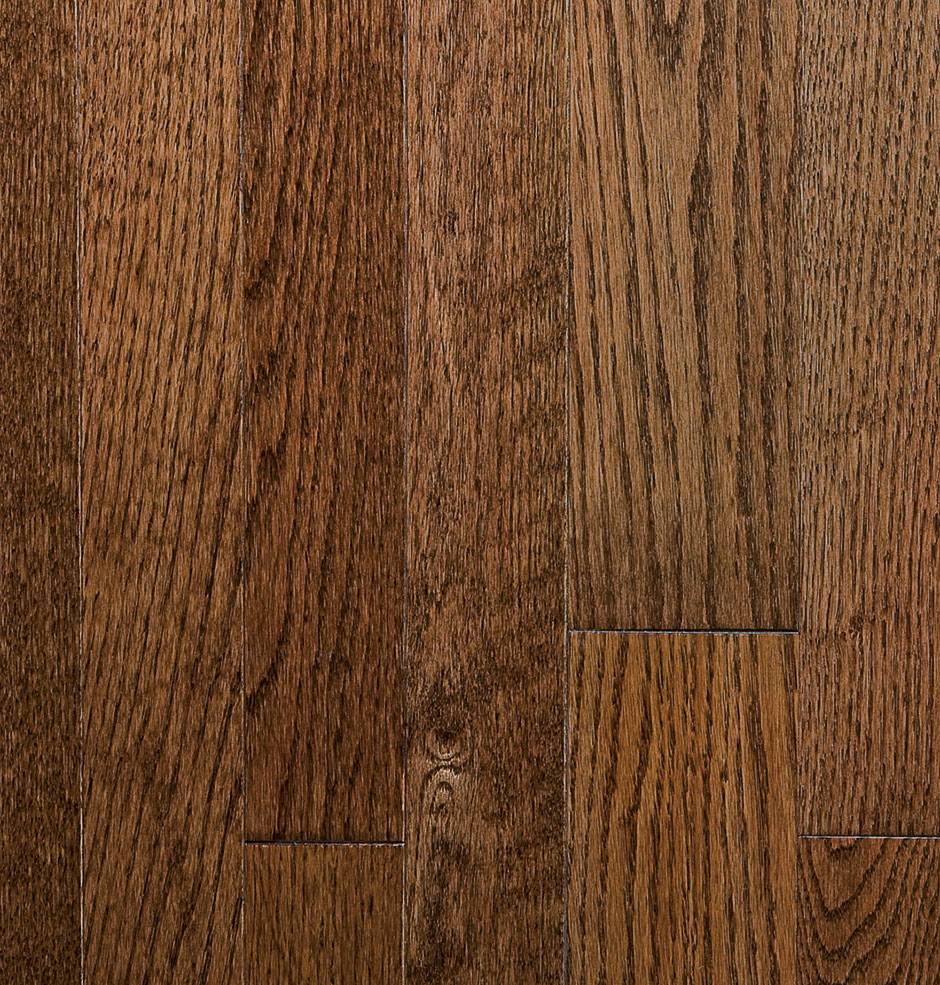Why Choose Red Oak for Your Hardwood Floors?
When it comes to selecting hardwood for your floors, the choices can be overwhelming. But if you’re looking for a timeless option that offers both beauty and durability, red oak is an excellent choice. As someone who has spent considerable time researching and experiencing different types of hardwood, I can tell you that red oak is a go-to for many homeowners, including myself. Today I’ll walk you through why red oak should be at the top of your list when considering new hardwood flooring.
- Versatility in Home Design: One of the most compelling reasons to choose red oak is its versatility. Red oak’s medium to light color palette allows it to blend seamlessly into a variety of interior styles. Whether your home exudes a modern vibe with sleek, minimalistic furniture or a more traditional aesthetic with rich, classic decor, red oak will fit right in. Its neutral tones serve as a perfect backdrop for any color scheme, making it easy to change up your decor without worrying about your floors clashing with your new design choices.
- Affordability Without Compromise: Red oak is also one of the more affordable hardwood options on the market, without sacrificing quality. As someone who loves the look of hardwood but doesn’t want to break the bank, red oak offers the perfect balance between cost and quality. It’s readily available, which helps keep the price lower than more exotic wood species. This affordability allows you to invest in other aspects of your home without feeling like you’ve compromised on your flooring.
- Durability That Withstands Daily Life: Another reason to choose red oak is its impressive durability. Life happens—kids, pets, and the occasional dropped dish are part of the daily routine. Red oak’s hardness rating is high enough to resist most dents and scratches, making it a practical choice for high-traffic areas like living rooms, hallways, and kitchens. Trust me, I’ve seen my fair share of accidents, and red oak has held up beautifully over the years.
- Easy to Work With: For those who enjoy a good DIY project, red oak is relatively easy to work with during installation. Its grain pattern makes it more forgiving when cutting and fitting pieces together, and it takes well to both nails and glue. If you’re hiring a professional, you’ll likely find that the installation costs are lower compared to more finicky wood types. Whether you’re going the DIY route or leaving it to the pros, red oak simplifies the process.
- Availability and Sustainability: Another advantage of red oak is its availability and sustainability. It’s one of the most abundant hardwoods in North America, which means you’re not only choosing a cost-effective option but also an environmentally responsible one. The widespread availability of red oak means that you’re less likely to face delays in your project due to supply issues. Plus, many suppliers adhere to sustainable harvesting practices, so you can feel good about your choice from an environmental standpoint.
- A Timeless Appeal: Lastly, red oak has a timeless appeal that never goes out of style. Unlike some trendy flooring options that may look dated in a few years, red oak has been a popular choice for decades and continues to be a favorite among homeowners and designers alike. Its classic appearance means that it will add value to your home and remain attractive for years to come.

Exploring the Natural Beauty of Red Oak Grain Patterns
One of the most captivating aspects of red oak hardwood flooring is its distinctive grain pattern. If you’ve ever admired the intricate details of a hardwood floor and wondered what type of wood could create such a beautiful, natural design, there’s a good chance you were looking at red oak. Let’s find out what makes red oak’s grain pattern so unique and why it adds such a remarkable touch to any home.
Distinctive, Yet Versatile Grain: The grain pattern of red oak is one of its most defining features. Unlike some woods that have a very subtle or uniform grain, red oak boasts a more pronounced, open grain. This means you’ll see a mix of straight lines, waves, and swirls that give the wood its character. What’s great about red oak’s grain is that it’s distinctive enough to be noticed, yet versatile enough to complement a wide range of interior styles. Whether you’re going for a rustic, country vibe or a more refined, contemporary look, red oak’s grain will enhance the overall aesthetic of your space.
Variation in Color and Texture: Another aspect that makes red oak’s grain so appealing is the variation in color and texture. Red oak ranges from light to medium brown, often with a subtle reddish tint, hence the name. The wood can also have lighter sapwood streaks, which create beautiful contrasts within the grain. This natural variation means that no two red oak floors are exactly alike. When you install red oak flooring, you’re essentially adding a one-of-a-kind piece of art to your home, with the grain pattern playing a significant role in its unique appearance.
A Natural, Organic Feel: Red oak’s grain pattern also contributes to the wood’s natural, organic feel. In a world where synthetic materials are becoming more common, there’s something inherently comforting about having a natural material like red oak underfoot. The grain pattern serves as a reminder of the wood’s origins, connecting your indoor space with the natural world. If you’re someone who appreciates the beauty of nature and wants to bring some of that into your home, red oak’s grain pattern is an excellent way to do so.
Highlighting the Grain with Finishes: One of the joys of working with red oak is how well it responds to different finishes, each of which can highlight the grain in its own unique way. For instance, a clear or light finish will emphasize the natural beauty of the wood, showcasing the intricate grain pattern. On the other hand, a darker stain can create a more dramatic effect, with the grain standing out in bold contrast to the stained wood. The choice of finish allows you to customize the look of your floor while still letting the natural beauty of the grain shine through.
The Grain and Room Size Perception: Believe it or not, the grain pattern of red oak can even affect how large or small a room feels. A wider, more open grain can make a room feel larger and more expansive, as the eye is drawn along the lines of the grain. Conversely, a tighter grain can create a cozier, more intimate atmosphere. This is something to consider when choosing red oak for different rooms in your home. For larger spaces like living rooms or open-plan areas, the open grain of red oak can enhance the sense of space, while in smaller rooms like bedrooms, it can add warmth and character.
A Grain That Ages Gracefully: Finally, one of the most appealing aspects of red oak’s grain pattern is how well it ages over time. As the wood matures, the grain becomes more pronounced, adding even more character to the floor. Unlike some materials that wear out or lose their appeal as they age, red oak only becomes more beautiful with time. Its grain pattern deepens, its color richens, and your floor tells the story of your home’s history. For me, this is one of the most rewarding aspects of choosing red oak—it’s a choice that continues to pay off year after year.
Durability and Longevity: How Red Oak Stands the Test of Time
When choosing hardwood flooring, durability is often at the forefront of decision-making. After all, flooring is a significant investment, and you want to ensure that it will stand the test of time. Red oak is renowned for its strength and resilience, making it a top contender for those seeking a long-lasting flooring solution. Let’s see why red oak is such a durable option and how it can serve your home well for decades.
A Strong and Resilient Hardwood
Red oak is classified as a hardwood, which already sets it apart from softer wood species like pine or cedar. It has a Janka hardness rating of around 1,290, making it tough enough to withstand the daily wear and tear that floors typically endure. Whether it’s the pitter-patter of pet paws, the occasional spill, or the movement of furniture, red oak can handle it all with grace. I’ve found that red oak floors remain in excellent condition, even in high-traffic areas of my home, proving their durability time and again.
Resistance to Scratches and Dents
One of the most common concerns with hardwood flooring is its susceptibility to scratches and dents. While no wood is completely impervious to damage, red oak performs exceptionally well in this regard. Its dense structure makes it less prone to scratches, and any minor dents that do occur tend to blend into the wood’s natural grain pattern, making them less noticeable. This resilience is particularly important for families with children or pets, where the likelihood of accidental damage is higher. Trust me, my red oak floors have seen their fair share of activity, and they still look fantastic.
Adapting to Climate Changes
Another aspect of red oak’s durability is its ability to adapt to changes in climate and humidity. Wood is a natural material that expands and contracts with fluctuations in temperature and moisture levels. Red oak, however, has a relatively stable structure, which means it’s less likely to warp or cup in response to these changes. This stability is crucial if you live in an area with distinct seasonal variations. I’ve noticed that my red oak floors remain flat and even, regardless of the weather outside, which is a testament to their durability.
Long-Lasting Beauty
Durability isn’t just about the wood’s physical strength; it’s also about how well it maintains its appearance over time. Red oak excels in this area as well. Its natural beauty doesn’t fade with age—in fact, it often improves. Over the years, the wood develops a rich patina that adds depth and character to its appearance. I’ve always admired how my red oak floors seem to gain more personality with each passing year, retaining their charm and elegance without looking worn or dated.
Ease of Refinishing
One of the significant advantages of hardwood flooring, and red oak in particular, is that it can be refinished multiple times over its lifespan. If your floors do start to show signs of wear after many years, professional refinishing can bring them back to their original glory. This involves sanding down the top layer of wood and applying a new finish, effectively giving your floors a fresh start. The ability to refinish red oak floors extends their lifespan significantly, allowing them to last for generations.
A Wise Long-Term Investment
Finally, choosing a durable wood like red oak is a wise investment for the long term. While it may have a higher upfront cost compared to other flooring options, the longevity and durability of red oak make it cost-effective in the long run. You won’t have to worry about replacing your floors every few years, and the continued beauty and function of your red oak floors will add value to your home. For me, the peace of mind that comes with knowing my floors will stand the test of time is priceless, making red oak a choice I never regret.
Staining and Finishing Red Oak: Customizing Your Floor’s Look
One of the most exciting aspects of choosing red oak for your hardwood floors is the ability to customize its appearance through staining and finishing. Red oak is incredibly receptive to stains, allowing you to achieve a wide range of looks, from light and natural to deep and dramatic. Let me walk you through the process of staining and finishing red oak, and how you can use these techniques to create the perfect look for your home.
The Benefits of Staining Red Oak
Red oak is known for its open grain and porous structure, which makes it an ideal candidate for staining. Unlike some woods that resist stains or take them unevenly, red oak absorbs stains beautifully, resulting in a rich, even color that highlights the wood’s natural grain pattern. This means you have a lot of flexibility in terms of the final look of your floors. Whether you want to enhance the wood’s natural hue or completely transform its color, red oak gives you the freedom to experiment with different stains until you find the perfect shade.
Choosing the Right Stain Color
The first step in customizing your red oak floors is choosing the right stain color. Red oak has a naturally warm tone, with a mix of light brown and reddish hues. If you prefer a natural look, you can opt for a clear or light stain that enhances the wood’s inherent beauty without significantly altering its color. On the other hand, if you’re looking for something bolder, red oak can be stained in a variety of colors, from rich, dark browns to trendy gray tones. The key is to test several stain samples on your red oak before making a final decision. This will give you a clear idea of how the stain will look once it’s applied across the entire floor.
Techniques for Applying Stain
Applying stain to red oak is a straightforward process, but it’s essential to do it correctly to achieve the best results. First, the wood must be properly prepared by sanding it down to create a smooth, even surface. This step is crucial because any imperfections in the wood will become more visible once the stain is applied. After sanding, the stain is applied using a brush or rag, working it into the wood in the direction of the grain. It’s important to wipe off any excess stain quickly to avoid blotches or uneven coloring. Depending on the desired intensity, you may need to apply multiple coats, allowing each to dry thoroughly before proceeding.
Finishing the Floor for Protection
Once you’ve achieved the perfect stain color, the next step is to apply a finish to protect your red oak floors. The finish not only seals in the stain but also provides a protective layer that guards against scratches, spills, and everyday wear and tear. There are several types of finishes to choose from, including polyurethane, varnish, and oil-based finishes. Each offers a different level of protection and sheen, so your choice will depend on your specific needs and the look you’re going for. For a high-gloss, durable finish, polyurethane is a popular choice, while oil-based finishes offer a more natural, matte appearance.
Customizing the Sheen Level
In addition to choosing the type of finish, you can also customize the sheen level of your red oak floors. Sheen refers to the level of glossiness, ranging from high-gloss to satin or matte. A high-gloss finish reflects the most light, giving your floors a shiny, polished appearance. Satin finishes, on the other hand, have a soft, subtle sheen that’s more forgiving of dust and footprints, making them a popular choice for busy households. If you prefer a more understated look, a matte finish will give your red oak floors a natural, almost raw appearance, while still providing the necessary protection.
Maintaining Your Stained and Finished Floors
After putting in the effort to stain and finish your red oak floors, it’s important to maintain them properly to keep them looking their best. Regular cleaning with a soft broom or vacuum will prevent dirt and debris from scratching the finish. It’s also a good idea to place rugs or mats in high-traffic areas to minimize wear. When cleaning, avoid harsh chemicals that can damage the finish; instead, use a damp mop and a cleaner specifically designed for hardwood floors. With the right care, your stained and finished red oak floors will remain beautiful and protected for many years to come.
Installation Tips for Red Oak Hardwood Floors
Installing red oak hardwood floors can be a rewarding project, whether you’re tackling it as a DIY endeavor or hiring professionals. The installation process plays a critical role in the overall performance and appearance of your floors, so it’s important to get it right. Below are some key tips and insights to help you achieve a flawless red oak floor installation that will stand the test of time.
Preparing the Subfloor
Before you even think about laying down your red oak planks, it’s essential to properly prepare the subfloor. A smooth, clean, and level subfloor is the foundation of a successful hardwood installation. If the subfloor is uneven, your red oak planks may not sit properly, leading to gaps, creaks, and other issues down the line. Start by thoroughly cleaning the subfloor to remove any dirt, dust, or debris. Then, use a level to check for any uneven areas. If necessary, you can use a self-leveling compound to fill in low spots. This step might seem tedious, but it’s crucial for ensuring that your red oak floor installation goes smoothly.
Acclimating the Wood
One of the most important steps in the installation process is acclimating your red oak flooring to the environment where it will be installed. Wood is a natural material that expands and contracts with changes in temperature and humidity. If you skip the acclimation process, your newly installed floors could warp or develop gaps as the wood adjusts to its new environment. To acclimate your red oak planks, bring them into the room where they’ll be installed and let them sit for at least 48 to 72 hours. This allows the wood to reach a moisture content level that’s consistent with the room’s conditions, reducing the risk of future problems.
Laying Out the Planks
Once your red oak planks have acclimated, it’s time to start laying them out. This step involves arranging the planks in a way that ensures a natural, attractive appearance. Start by deciding on the direction you want the planks to run. In most cases, it’s best to run the planks parallel to the longest wall in the room, as this creates a more visually appealing effect. Next, mix up the planks from different boxes to avoid having too many similar-looking boards next to each other. Red oak’s natural variation in color and grain is one of its best features, and you want to make sure that variation is evenly distributed across the floor.
Nailing vs. Gluing the Planks
When it comes to actually securing the red oak planks to the subfloor, you have a couple of options: nailing or gluing. Nailing is the more traditional method and involves using a nail gun to attach the planks to the subfloor. This method is often preferred because it allows the wood to move slightly with changes in humidity, reducing the risk of warping. Gluing, on the other hand, involves applying adhesive to the back of each plank before pressing it into place. This method creates a more permanent bond but can be more challenging to work with, especially for beginners. The choice between nailing and gluing will depend on your comfort level and the specific requirements of your installation.
Dealing with Expansion Gaps
One of the key considerations when installing red oak (or any hardwood) is allowing for expansion gaps around the perimeter of the room. Wood naturally expands and contracts with changes in temperature and humidity, and without these gaps, your floor could buckle or warp. To create expansion gaps, leave a small space (usually about 1/4 to 1/2 inch) between the edge of the planks and the wall. These gaps will be covered by baseboards or molding, so they won’t be visible once the installation is complete. It’s a small detail, but it makes a big difference in the long-term performance of your floors.
Finishing Touches
After all the planks are installed, it’s time for the finishing touches. This includes installing baseboards or quarter-round molding to cover the expansion gaps, as well as filling any nail holes with wood putty. If you’ve chosen to stain and finish your red oak floors yourself, this is the time to do it. Apply your chosen stain and finish according to the manufacturer’s instructions, making sure to work in a well-ventilated area. Once the finish has dried, give your floors a final clean to remove any dust or debris. With these finishing touches complete, your red oak floors will be ready to enjoy.
Maintaining Red Oak Floors: Cleaning and Care Guidelines
Once you’ve installed your beautiful red oak hardwood floors, the next step is to maintain them properly to keep them looking their best. While red oak is a durable and resilient wood, it still requires regular care to prevent damage and ensure its longevity. Below are some practical tips and guidelines for cleaning and caring for your red oak floors, so they remain a stunning feature of your home for years to come.
Daily Maintenance
The key to keeping your red oak floors in top condition is to stay on top of daily maintenance. This involves simple tasks like sweeping or vacuuming to remove dust, dirt, and debris that can scratch the surface of the wood. A soft-bristle broom or a vacuum with a hardwood floor attachment is ideal for this purpose. It’s important to avoid using vacuums with beater bars, as these can cause scratches or dents in the wood. Regular sweeping or vacuuming not only keeps your floors clean but also prevents dirt from being ground into the wood over time, which can lead to more significant damage.
Dealing with Spills and Stains
Accidents happen, and when they do, it’s important to clean up spills on your red oak floors as quickly as possible. While red oak is relatively resistant to moisture, prolonged exposure to water or other liquids can cause the wood to swell or warp. To clean up spills, use a soft, absorbent cloth to blot the area dry. Avoid rubbing, as this can spread the liquid and make the stain worse. For sticky or stubborn spills, a damp cloth with a small amount of hardwood floor cleaner can be used. Just be sure to dry the area thoroughly afterward to prevent any moisture from seeping into the wood.
Protecting Your Floors
Prevention is key when it comes to protecting your red oak floors from damage. One of the best ways to do this is by placing rugs or mats in high-traffic areas, such as entryways, hallways, and in front of sinks. These rugs will help to catch dirt, moisture, and debris before they reach your floors, reducing the risk of scratches and water damage. It’s also a good idea to use felt pads or furniture coasters under the legs of chairs, tables, and other heavy furniture. These pads will prevent the furniture from scratching or denting the wood when it’s moved.
Regular Deep Cleaning
In addition to daily maintenance, your red oak floors will benefit from regular deep cleaning to remove any built-up dirt or grime. For this, you’ll want to use a hardwood floor cleaner that’s specifically designed for use on wood surfaces. Avoid using harsh chemicals, ammonia, or vinegar-based cleaners, as these can damage the finish on your floors. When deep cleaning, work in small sections, spraying the cleaner onto the floor and then wiping it away with a microfiber mop or cloth. Be sure to follow the manufacturer’s instructions for the cleaner, and always dry the floor thoroughly after cleaning to prevent any moisture from seeping into the wood.
Refinishing Your Floors
Over time, even the best-maintained floors may start to show signs of wear, such as scratches, dullness, or loss of shine. When this happens, refinishing your red oak floors can restore their original beauty. Refinishing involves sanding down the top layer of wood to remove any surface imperfections, then applying a new stain and finish. This process not only refreshes the appearance of your floors but also adds a new layer of protection, helping them to withstand future wear and tear. While refinishing is a more involved process, it’s an excellent way to extend the life of your red oak floors and keep them looking their best.
Long-Term Care
Finally, long-term care is about making sure your red oak floors continue to perform well and look great for many years. This includes maintaining a consistent indoor climate to prevent the wood from expanding or contracting due to changes in temperature or humidity. Using a humidifier in the winter and an air conditioner in the summer can help regulate the indoor environment and protect your floors. Additionally, consider scheduling professional cleaning or maintenance services periodically to keep your floors in top condition. By following these guidelines, you can enjoy the natural beauty and durability of your red oak floors for decades to come.
Matching Red Oak Floors with Home Décor Styles
Red oak hardwood floors are not only beautiful and durable but also incredibly versatile, making them an excellent choice for a variety of home décor styles. Whether your home leans towards traditional, modern, rustic, or eclectic design, red oak floors can seamlessly blend in or stand out, depending on how you style the rest of your space. Let’s see how to match your red oak floors with different home décor styles, helping you create a cohesive and stylish look that enhances the natural beauty of your floors.
Traditional Décor
If your home has a traditional design, red oak floors are a perfect match. The warm, classic look of red oak complements traditional furniture and décor elements, such as ornate woodwork, rich fabrics, and classic patterns like damask or floral. To enhance the traditional feel, consider choosing a medium to dark stain for your red oak floors, which will add a sense of depth and sophistication to the space. Pair your floors with antique or vintage furniture, elegant rugs, and traditional accessories like chandeliers or brass fixtures to create a timeless, elegant atmosphere.
Modern Décor
For those who prefer a modern aesthetic, red oak floors can still be a great choice, especially when paired with the right finishes and décor. To achieve a modern look, opt for a lighter stain or even a natural, unfinished appearance that highlights the wood’s grain without adding too much warmth. The clean, sleek lines of modern furniture, along with minimalist décor elements, will contrast beautifully with the natural texture of the red oak. Consider incorporating a monochromatic color scheme, with neutral tones like gray, white, or black, to keep the focus on the flooring while maintaining a contemporary vibe.
Rustic Décor
Rustic décor is all about embracing natural materials and creating a cozy, lived-in feel, making red oak floors an ideal foundation for this style. The rich, textured grain of red oak adds warmth and character to rustic interiors, complementing other natural elements like stone, reclaimed wood, and woven textiles. For a truly rustic look, consider distressing your red oak floors or choosing a hand-scraped finish that adds an extra layer of texture. Pair your floors with rustic furniture pieces like wooden beams, leather sofas, and handmade accessories to create a warm, inviting space that feels like a cozy retreat.
Eclectic Décor
If your style is more eclectic, red oak floors provide a versatile backdrop that allows you to mix and match different décor elements without overwhelming the space. The key to eclectic design is balance, and red oak’s natural warmth and beauty can help to ground the more vibrant or unconventional elements in your home. Whether you’re mixing patterns, colors, or textures, red oak floors will provide a cohesive foundation that ties everything together. Consider pairing your floors with bold, colorful rugs, unique furniture pieces, and a mix of vintage and modern accessories to create a space that’s full of personality and creativity.
Coastal Décor
For a coastal-inspired home, red oak floors can add a touch of warmth and contrast to the typically light and airy color palette. To achieve a coastal look, consider staining your red oak floors in a light, sandy tone that mimics the natural colors of the beach. Pair your floors with crisp white walls, soft blue accents, and natural textures like jute or rattan to create a serene, beachy vibe. The natural grain of the red oak will add a subtle texture that enhances the overall coastal aesthetic without overpowering the space.
Transitional Décor
Transitional décor is all about blending traditional and contemporary elements to create a balanced, timeless look. Red oak floors are a perfect fit for this style, as they offer the warmth and richness of traditional wood flooring while still being versatile enough to work with modern décor. To achieve a transitional look, consider a medium stain that brings out the natural beauty of the red oak without being too dark or too light. Pair your floors with a mix of classic and contemporary furniture, neutral color schemes, and understated accessories to create a space that feels both comfortable and stylish.
Common Mistakes to Avoid
Choosing red oak for your hardwood floors is a fantastic decision, but like any major home improvement project, there are potential pitfalls to be aware of. By avoiding these common mistakes, you can ensure that your red oak floors turn out exactly as you envisioned, providing beauty and durability for years to come.
Skipping the Acclimation Process
One of the biggest mistakes you can make when installing red oak floors is skipping the acclimation process. As mentioned earlier, wood expands and contracts with changes in temperature and humidity. If you don’t allow your red oak planks to acclimate to the environment where they’ll be installed, you risk warping, buckling, or gaps forming after installation. Always make sure to acclimate the wood for at least 48 to 72 hours before starting the installation.
Neglecting Subfloor Preparation
Another common mistake is neglecting the preparation of the subfloor. A clean, level, and dry subfloor is essential for a successful hardwood installation. If the subfloor is uneven, it can cause the planks to sit improperly, leading to squeaks, gaps, or even damage to the wood over time. Take the time to thoroughly prepare the subfloor before laying down your red oak planks to ensure a smooth and long-lasting installation.
Choosing the Wrong Stain or Finish
When it comes to staining and finishing red oak floors, it’s important to choose the right products to achieve your desired look and protection. Some homeowners make the mistake of selecting a stain color without testing it on the wood first, leading to disappointing results. Additionally, using the wrong finish can result in a floor that’s either too glossy or not durable enough for your needs. Always test stains on a small, inconspicuous area of the floor, and consult with a professional if you’re unsure about which finish to use.
Ignoring Maintenance Requirements
Red oak floors are durable, but they do require regular maintenance to keep them looking their best. One common mistake is assuming that hardwood floors are maintenance-free. Neglecting routine cleaning, such as sweeping and mopping, can lead to dirt and debris scratching the surface over time. Similarly, not addressing spills or water damage promptly can result in staining or warping. Be sure to follow proper cleaning and care guidelines to extend the life and beauty of your red oak floors.
Not Considering Your Home’s Décor
When choosing red oak floors, it’s important to consider how they will fit with your home’s overall décor. Some homeowners make the mistake of selecting a stain or finish that clashes with their existing furniture, wall colors, or overall design style. Before making a final decision, think about how the color and texture of the wood will complement or contrast with the other elements in your home. This will help you achieve a cohesive and harmonious look that enhances the beauty of your space.
Overlooking the Impact of Lighting
Lighting can have a significant impact on the appearance of your red oak floors. A mistake that many homeowners make is not taking into account how natural and artificial light will affect the color and sheen of the wood. For example, direct sunlight can cause certain stains to fade over time, while low light may make a dark stain appear even darker. Consider how the lighting in each room will interact with your red oak floors, and make adjustments to your stain or finish choice accordingly.
How durable are red oak hardwood floors?
Red oak is known for its durability and is a popular choice for high-traffic areas in homes. With proper care and maintenance, red oak floors can last for decades, making them a long-term investment. The wood’s natural hardness helps it resist dents and scratches, although like any hardwood, it’s not completely immune to damage. Regular cleaning, protective measures like area rugs, and prompt attention to spills can help preserve the durability of your red oak floors.
Can red oak floors be refinished?
Yes, one of the great advantages of red oak floors is that they can be refinished multiple times. Over time, the surface of the floor may show signs of wear, such as scratches, scuffs, or loss of shine. Refinishing involves sanding down the top layer of the wood and applying a new stain and finish, effectively giving your floors a fresh, new appearance. The number of times you can refinish your floors depends on the thickness of the wood, but typically, red oak floors can be refinished 3 to 5 times during their lifespan.
What’s the best way to clean red oak hardwood floors?
The best way to clean red oak hardwood floors is to sweep or vacuum them regularly to remove dust and debris. For a deeper clean, use a hardwood floor cleaner that’s specifically designed for wood surfaces. Avoid using water, steam mops, or harsh chemicals, as these can damage the finish and the wood itself. When cleaning, it’s important to work in small sections and dry the floor thoroughly afterward to prevent moisture from seeping into the wood.
How does red oak compare to white oak?
Red oak and white oak are both popular choices for hardwood flooring, but they have some differences. Red oak tends to have a more pronounced grain pattern and warmer tones, while white oak has a more subtle grain and cooler, slightly grayish hues. In terms of hardness, white oak is slightly harder than red oak, but both are durable options. The choice between red oak and white oak often comes down to personal preference and the desired aesthetic for your home.
Can red oak floors be stained in different colors?
Yes, red oak floors can be stained in a wide variety of colors, making them a versatile choice for any home décor style. The wood’s open grain structure allows it to absorb stain well, resulting in rich, vibrant colors. Whether you prefer a natural, light stain or a darker, more dramatic look, red oak can be customized to suit your tastes. It’s always a good idea to test stains on a small area of the wood before committing to a color to ensure you achieve the desired result.
How does humidity affect red oak floors?
Humidity can have a significant impact on red oak floors, as wood naturally expands and contracts with changes in moisture levels. In high humidity, red oak may swell, leading to buckling or warping, while in low humidity, it can shrink, causing gaps between the planks. To protect your red oak floors, it’s important to maintain a consistent indoor environment with moderate humidity levels. Using a humidifier in the winter and a dehumidifier in the summer can help prevent issues related to humidity and keep your floors looking their best.
Wickham Domestic Red Oak Canadian Plus Walnut – Fovama Rugs
Related Posts:

